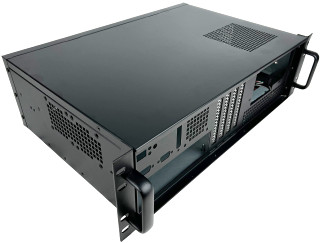In the evolving world of IT Hardware and Computer Hardware, one device plays a pivotal role in data selection and routing—the Multiplexer. Also known as a “MUX,” a multiplexer is a digital switch that enables multiple signals to share one device or resource instead of having separate resources for each signal. As data transmission needs grow and efficiency becomes more critical, understanding the importance of the multiplexer becomes essential.
What is a Multiplexer?
A Multiplexer is a combinational logic circuit designed to switch one of several input lines to a single common output line. Essentially, it takes multiple input signals and channels them through a single output based on control signals. This selection process happens rapidly and accurately, making multiplexers ideal for environments requiring streamlined data flow.
In simpler terms, a multiplexer can be imagined as a traffic controller at a busy intersection. Instead of all cars (data signals) going at once and causing a jam, the multiplexer allows only one car to pass through at a time based on signals (selectors) that determine which car (data) goes next.
Importance of Multiplexers in IT and Computer Hardware
Multiplexers are critical components in both IT Hardware and Computer Hardware systems. Here’s why:
-
Efficient Data Handling: Multiplexers allow the transmission of multiple signals over a single line, reducing the need for multiple data paths. This is highly valuable in computer networks, where bandwidth and efficiency are key.
-
Resource Optimization: Using a multiplexer can reduce the number of components needed in a circuit. This makes hardware systems more cost-effective and less complex.
-
Improved System Design: Engineers can design more compact and efficient systems using multiplexers. This contributes to the development of faster, smaller, and more powerful devices.
-
Signal Routing in Processors: Inside CPUs and other processing units, multiplexers play a vital role in routing data between registers, memory units, and arithmetic logic units (ALUs).
How a Multiplexer Works
A Multiplexer operates with the help of data inputs, control lines (selectors), and an output line. The number of control lines determines how many inputs a multiplexer can handle. For example, a 2-bit control line can select from 4 different inputs (2^2 = 4).
Example: 4-to-1 Multiplexer
-
Inputs: D0, D1, D2, D3
-
Control Lines: S0, S1
-
Output: Y
Depending on the binary value of S0 and S1, one of the four data inputs is routed to the output Y. This capability allows for complex decision-making in digital circuits using a simple hardware device.
Applications of Multiplexers
The versatility of multiplexers makes them indispensable across various domains in Computer Hardware and IT Hardware. Here are some of their most common applications:
-
Data Routing in Communication Systems
Multiplexers are heavily used in telephone networks and satellite communication, where several audio or video signals are transmitted over a single medium. -
Memory Management in Computers
In CPUs and memory systems, multiplexers help in selecting specific memory locations for read/write operations. -
Control Systems
In embedded systems and automation, multiplexers are used to channel different sensor outputs into a central processor for efficient data interpretation. -
Digital Signal Processing (DSP)
Multiplexers assist in choosing the right signal for processing in audio, video, and image processing applications. -
Testing and Debugging Hardware
Engineers use multiplexers in testing setups to switch between various circuit paths and analyze behavior under different configurations.
Types of Multiplexers
There are several types of multiplexers based on the number of inputs and outputs:
-
2-to-1 Multiplexer
-
4-to-1 Multiplexer
-
8-to-1 Multiplexer
-
16-to-1 Multiplexer
There are also Analog Multiplexers, which handle continuous signals rather than digital, making them suitable for audio and sensor inputs.
Demultiplexer: The Counterpart
While discussing multiplexers, it’s essential to mention the Demultiplexer (DEMUX). A demultiplexer performs the opposite function of a multiplexer—it takes a single input and routes it to one of many outputs. Both devices often work in tandem to ensure seamless data routing and separation.
Advantages of Using a Multiplexer
-
Reduced Complexity
By minimizing the number of data lines, multiplexers contribute to cleaner and simpler circuit designs. -
Cost Efficiency
Fewer components translate to lower production costs, which is vital in mass-manufactured computer hardware. -
Versatility
Multiplexers are easily integrated into both small-scale and large-scale IT infrastructures. -
Improved Signal Management
They help manage signal integrity and reduce interference by maintaining a single path for data transmission.
Conclusion
The Multiplexer may seem like a small and straightforward component, but its impact on IT Hardware and Computer Hardware systems is immense. From optimizing data flow in processors to reducing hardware complexity in communication systems, the multiplexer stands as a key element in modern digital architecture.
As digital systems continue to evolve, the demand for efficient data routing and compact circuit design grows, reinforcing the importance of understanding and utilizing devices like the Multiplexer. Whether you’re an IT professional, a hardware engineer, or an enthusiast exploring the building blocks of technology, recognizing the role of this powerful tool is crucial in appreciating how our digital world functions.
